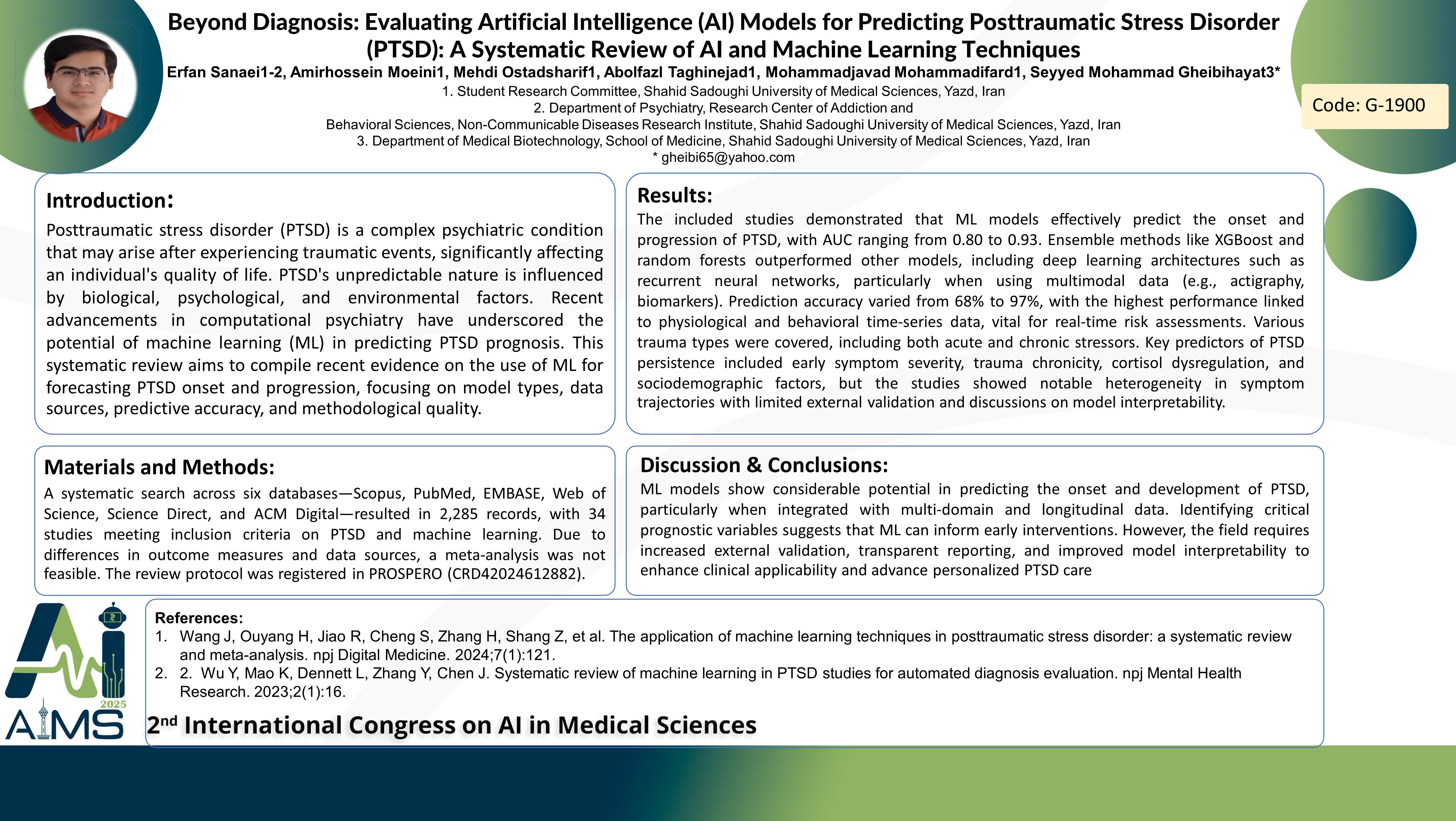فراتر از تشخیص: ارزیابی مدلهای هوش مصنوعی (AI) برای پیشبینی اختلال استرس پس از سانحه (PTSD): مروری سیستماتیک بر تکنیکهای هوش مصنوعی و یادگیری ماشینی
کد: G-1900
نویسندگان: Erfan Sanaei ℗, Amirhossein Moeini, Mehdi Ostadsharif, Abolfazl Taghinejad, Mohammadjavad Mohammadifard, Seyed Mohammad Gheibihayat *
زمان بندی: زمان بندی نشده!
برچسب: سیستم های تصمیم یار بالینی
دانلود: دانلود پوستر
خلاصه مقاله:
خلاصه مقاله
Background and aims: Posttraumatic stress disorder (PTSD) is a complex psychiatric condition that may arise after experiencing traumatic events, significantly affecting an individual's quality of life. PTSD's unpredictable nature is influenced by biological, psychological, and environmental factors. Recent advancements in computational psychiatry have underscored the potential of machine learning (ML) in predicting PTSD prognosis. This systematic review aims to compile recent evidence on the use of ML for forecasting PTSD onset and progression, focusing on model types, data sources, predictive accuracy, and methodological quality. Method: A systematic literature search was conducted across six databases: Scopus, PubMed, EMBASE, Web of Science, Science Direct, and ACM Digital. The search was guided by keywords linked to PTSD and ML methods. Out of 2,285 results (after removing duplicates), 34 studies met the inclusion criteria. Meta-analysis was not feasible due to variability in outcome measures and data sources. The protocol for this review was registered in PROSPERO (CRD42024612882). Results: The included studies demonstrated that ML models effectively predict the onset and progression of PTSD, with areas under the curve (AUC) ranging from 0.80 to 0.93. Ensemble methods like XGBoost and random forests outperformed other models, including deep learning architectures such as recurrent neural networks, particularly when using multimodal data (e.g., actigraphy, biomarkers). Prediction accuracy varied from 68% to 97%, with the highest performance linked to physiological and behavioral time-series data, vital for real-time risk assessments. Various trauma types were covered, including both acute and chronic stressors. Key predictors of PTSD persistence included early symptom severity, trauma chronicity, cortisol dysregulation, and sociodemographic factors, but the studies showed notable heterogeneity in symptom trajectories with limited external validation and discussions on model interpretability. Conclusion: ML models show considerable potential in predicting the onset and development of PTSD, particularly when integrated with multi-domain and longitudinal data. Identifying critical prognostic variables suggests that ML can inform early interventions. However, the field requires increased external validation, transparent reporting, and improved model interpretability to enhance clinical applicability and advance personalized PTSD care.
کلمات کلیدی
Posttraumatic Stress Disorder, Prognosis, Machine Learning
